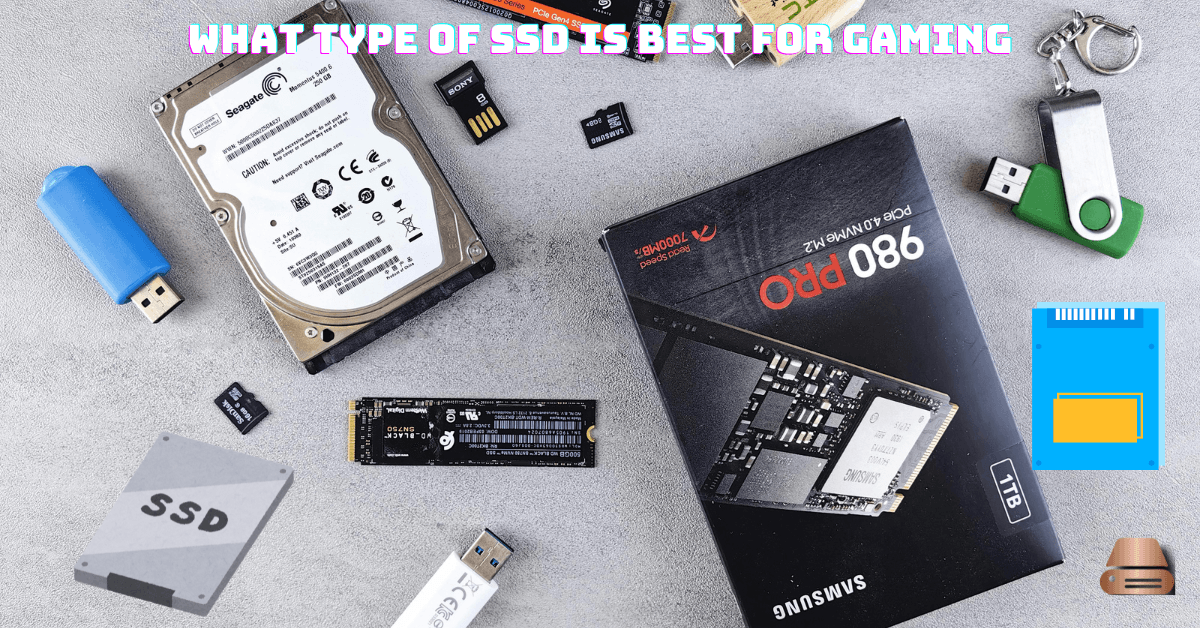A Solid-State Drive (SSD) is a storage device that uses flash memory to store data, offering significantly faster performance compared to traditional Hard Disk Drives (HDDs). Unlike HDDs, SSDs have no moving parts, which makes them more reliable and efficient. Data retrieval and write processes are faster, ensuring that your computer can access game files, boot up systems, and load levels at lightning speed. When considering what type of SSD is best for gaming, these factors make SSDs a superior choice over HDDs.
The Importance of SSDs in Modern Gaming
Gaming has evolved dramatically, with larger game sizes and more detailed graphics. SSDs have become a cornerstone for optimal gaming performance. Faster load times, seamless transitions between scenes, and reduced stuttering during gameplay are just some of the benefits. With gaming becoming more immersive, having an SSD is less of a luxury and more of a necessity.
Types of SSDs for Gaming
SATA SSDs: Pros and Cons for Gaming
SATA SSDs are the most common type and provide a significant upgrade over HDDs. However, their read and write speeds are limited to the SATA interface, typically capping at around 600 MB/s. While suitable for older systems or budget-conscious gamers, they might not fully meet the demands of modern AAA gaming titles.
NVMe SSDs: Speed and Performance Benefits
NVMe (Non-Volatile Memory Express) SSDs utilize the PCIe interface, delivering speeds up to 7,000 MB/s. This makes them ideal for gamers seeking top-tier performance. With NVMe SSDs, games load in seconds, and system responsiveness is unparalleled. However, this performance comes at a higher price point.
PCIe Gen 4 vs. PCIe Gen 3 SSDs: Which is Better?
PCIe Gen 4 SSDs offer double the bandwidth of Gen 3, making them a better choice for future-proofing. If your motherboard supports Gen 4, investing in this technology ensures maximum performance for years to come. For gamers with older systems, Gen 3 SSDs remain a solid option.
M.2 SSDs: Compact and Efficient Solutions
M.2 SSDs are a form factor that supports both SATA and NVMe interfaces. They are compact, fitting directly into the motherboard, eliminating the need for additional cables. Their sleek design and superior performance make them a favorite among gamers.
External SSDs: Are They Good for Gaming?
External SSDs are portable and convenient, often used for expanding storage or playing games across multiple devices. While they offer decent performance, they’re limited by USB speeds, which can’t match the internal SSDs’ capabilities.
Key Factors to Consider When Choosing an SSD
Read and Write Speeds
Faster speeds translate to shorter load times and better overall performance. NVMe SSDs outperform SATA SSDs, making them the preferred choice for serious gamers.
Capacity: Finding the Right Size for Gaming
Modern games can require upwards of 100 GB of storage. A 1TB SSD is a sweet spot for most gamers, providing enough space for multiple titles and essential files.
Durability and Lifespan
SSDs are rated by their Total Bytes Written (TBW). Higher TBW values indicate greater durability. Gaming SSDs often have robust endurance to handle frequent read and write cycles.
Compatibility with Your System
Ensure your motherboard supports the SSD type you choose. For example, PCIe Gen 4 SSDs require compatible motherboards to unlock their full potential.
Cost vs. Performance Analysis
Budget-friendly SATA SSDs are ideal for casual gamers, while NVMe SSDs justify their premium price with unmatched performance. Balancing cost and needs is crucial.
Popular Gaming Scenarios and Recommended SSDs
SSDs for Competitive Online Gaming
For competitive gamers, NVMe SSDs are a must. Reduced load times and faster asset streaming can give you a slight edge in matches.
SSDs for Open-World and AAA Titles
Open-world games with large maps benefit from the speed of PCIe Gen 4 SSDs. These SSDs eliminate stuttering and pop-ins, enhancing immersion.
Budget SSDs for Casual Gamers
Casual gamers can opt for high-capacity SATA SSDs, which strike a balance between cost and performance.
Installation Tips for Gaming SSDs
How to Install an Internal SSD
- Turn off your PC and unplug it from the power source.
- Open the case and locate the appropriate slot for your SSD.
- Insert the SSD into the slot and secure it with screws.
- Reconnect power and data cables if applicable.
- Boot the system and initialize the SSD in your operating system.
Optimizing SSD Performance for Gaming
- Enable AHCI mode in BIOS for better performance.
- Keep your SSD firmware up to date.
- Avoid filling the SSD to full capacity to maintain speed.
Conclusion: Choosing the Right SSD for Gaming
Selecting the best SSD for gaming depends on your needs and budget. For high-performance gaming, NVMe SSDs like the Samsung 980 Pro or WD Black SN850X are excellent choices. Budget-conscious gamers can consider SATA SSDs like the Crucial MX500. Regardless of your choice, an SSD is a game-changer that elevates your gaming experience.
Thanks for reading this blog. If you have any doubts contact us.
FAQs About What type of SSD is best for gaming
Do SSDs Improve FPS in Games?
SSDs don’t directly improve FPS but enhance the overall gaming experience by reducing load times and stuttering.
Is a 1TB SSD Enough for Gaming?
Yes, a 1TB SSD is sufficient for most gamers, providing space for multiple games and system files.
Can an External SSD Replace an Internal SSD?
While external SSDs are useful, internal SSDs offer better speeds and reliability for gaming.
What Are the Best SSD Brands for Gaming?
Brands like Samsung, Western Digital, and Crucial are renowned for their high-quality gaming SSDs.
How Long Do SSDs Last for Gaming?
With typical use, SSDs can last 5-10 years, depending on their TBW rating.
